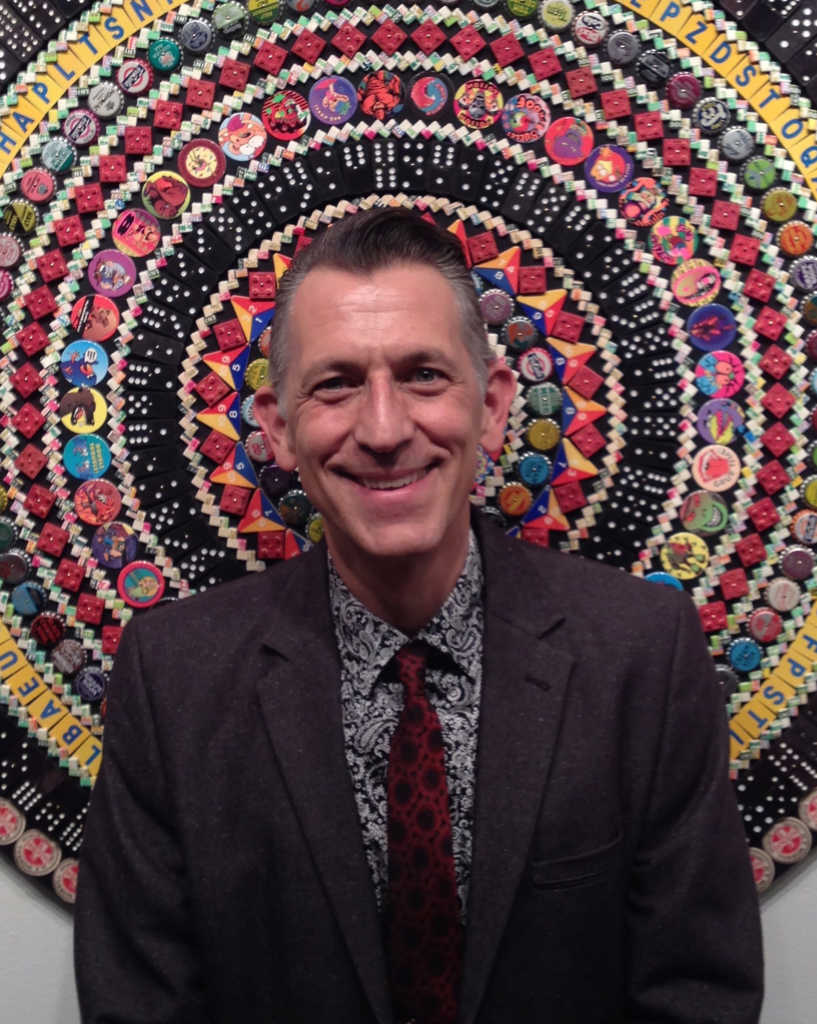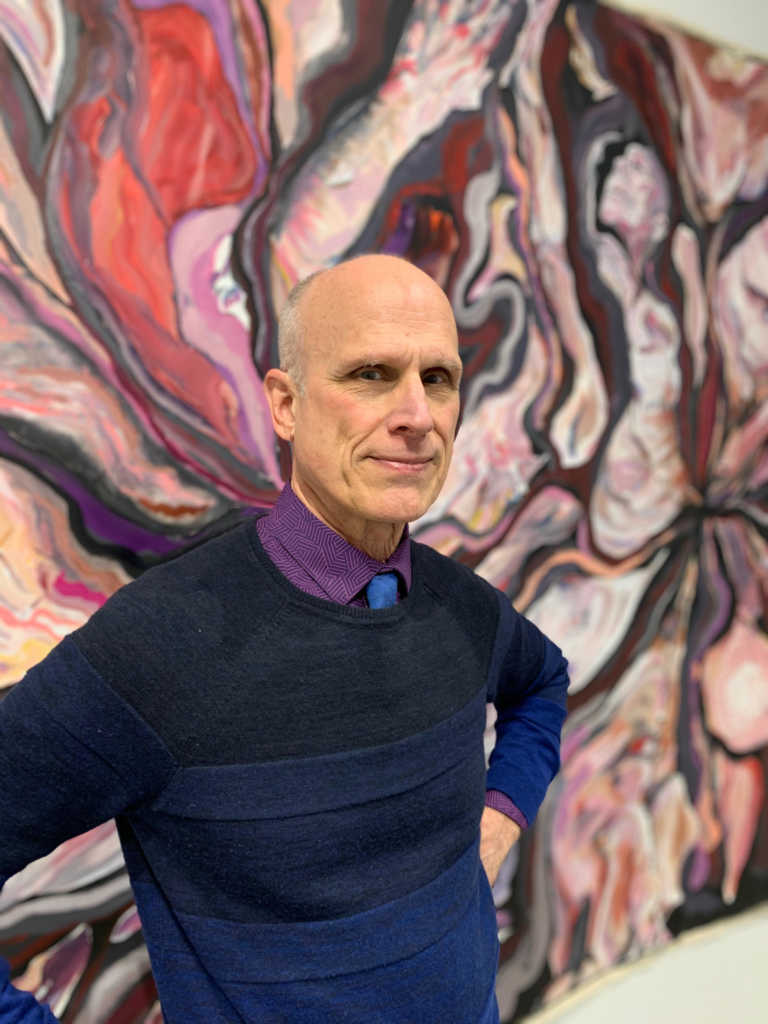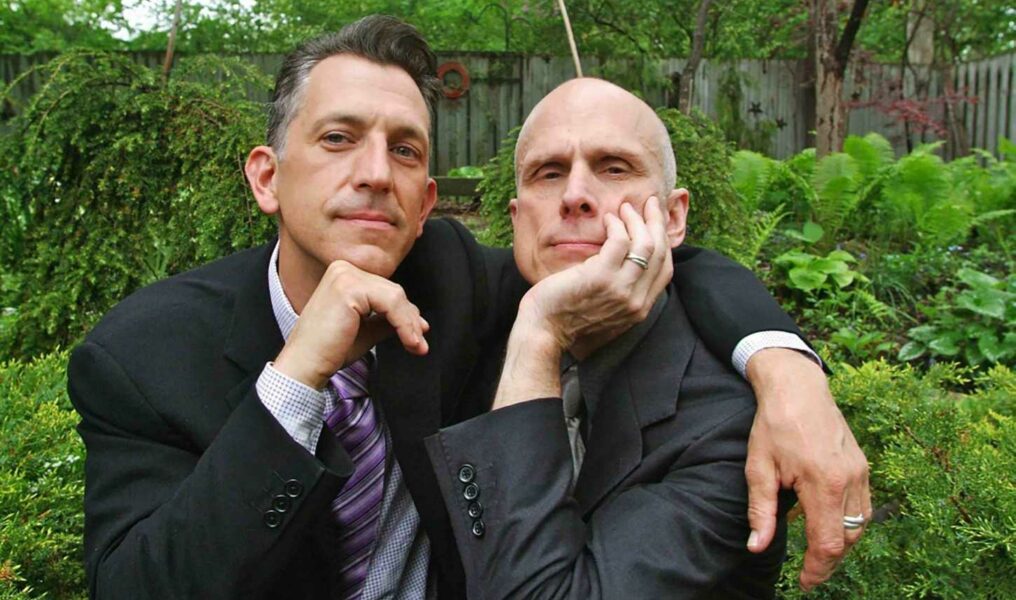Art brought John Gutoskey and Peter Sparling together 31 years ago. Sparling was teaching dance at the University of Michigan. Gutoskey ran the costume shop in the university's theater department.
"Anybody who wanted to borrow costumes had to go through me," Gutoskey tells Pride Source.
"I was a faculty member who needed costumes," Sparling remembers. "John was the man at the other end of the phone."
It wasn't long before Gutoskey became the man in the passenger seat of Sparling's car. "I told John I had a car; if he needed me to get him somewhere I'd be happy to help out," Sparling remembers. This led to a couple of trips to the mall together, a couple of movies, including "Reversal of Fortune" with Glenn Close and Jeremy Irons.
"Then we began to see each other on a pretty steady basis," Sparling says.
Sparling had a tenure track position at the school. Gutoskey decided to leave U-M to explore different employment opportunities.
"I was actually going to leave town," Gutoskey says. "I was done at the university, and I was ready to get out of here, but Peter had other ideas. I basically said, 'Well, if I stay, can we live together? Because otherwise I'm not going to stay,' and we've been living together ever since."

John Gutoskey
For the last 15 years, Gutoskey has been making art full time. Sparling's professional life has been centered on dance as a student, performer and teacher. It was only recently that Sparling started painting.
The couple share an exhibit of their works for the first time at the CultureVerse Gallery & Scanning Lab in Ann Arbor. The exhibit, which is called "Liminal Landscapes," runs through January 2022.
"It's the first time we've shared something since I was designing costumes for Peter," Gutoskey says.
While this is a shared exhibit, the couple's work isn't collaborative. Each artist has a unique style and approach. Gutoskey's work focuses on current events and is often political, while Sparling's art is a way for him to marry the movement of dance with the indelible nature of painting.
"I think what we're discovering at CultureVerse is that with John's art on one side of the gallery and mine at the other is that they complement each other and they both have a significant and strong presence, both apart and together," Sparling says.
He continues, "We decided upon the title of our show through a series of mono prints that John created called 'liminal landscapes.' The works that John is showing and then the works that I am showing share a territory that is also spiritual and psychological."
In the exhibit notes, "liminality" is defined "as a disoriented, in-between state, and a state that facilitates the disruption of both spatial and temporal dimensions." Of interest to both artists is the idea of queer spaces — how there are few spaces that are actually queer, aside from disappearing places like LGBTQ+ bars, and how this lack of queer space necessitates the "queering" of other spaces.
An example Sparling offers is a dance studio "where bodies can come together and go into a liminal space here [and] they are permitted to move freely" in ways that would be considered bizarre or inappropriate in other settings, similarly to how LGBTQ+ people can freely be and act like themselves in a queer space, but don't necessarily have that freedom outside of that space.
"[A] bar is a sacred space…akin to a church or a temple," Gutoskey says. "It's a scared space to us as a queer community."
Gutoskey's series "PULSE Nightclub: 49 Elegies" serves as a good example of the "liminal space" the couple's work shares when juxtaposed with Sparling's images of dancing bodies in motion.
"I needed to process what I was feeling because I was so overwhelmed by it," Gutoskey says. "I was devastated, and I was grieving." Despite that grief, "It's not a depressing piece to me."
He says he wanted the piece to not just grieve, but also celebrate the people lost and provide a sense of transcendence and hope. Sparling's work also includes elements of grief, celebration and transcendence.
"As a dancer for 50 odd years, I've always been intrigued and maybe even frustrated that it's such an ephemeral art," he says.
"It became kind of a natural progression for me to photograph my own body in motion and also video tape my body in motion," he says. This led to a breakthrough when it came to the challenge of capturing this movement in his paintings.
"I can paint while the figure is moving," he realized. "I don't have to stop the video."

Peter Sparling
Sparling's paint brush follows the dancer's movement, transforming movement to canvas.
"I have crossed the bridge," he says. "I have united the two seemingly disparate realms."
Sparling and Gutoskey obviously share physical space in their home, but when it comes to creating, each artist has his own studio in the backyard. Gutoskey's is in the converted garage and Sparling's is in a shed the couple built specifically for his work.
You can find Gutoskey in his studio "making work in response to what is happening in the world," he says. "I have to have something that I am mentally and emotionally really involved with." Whether it's politics, culture, current events, or "anything that just sort of grabs me."
He adds, "I just am responding to the world, and I do really consciously want to be an artist who is commenting on the time I live in."
Sparling, on the other hand, is focused on creating something beautiful.
"I'm obsessed with beauty," he says. "I want to go [to my studio] and make beauty."
"I seek an immersive state that involves a lot of improvisation," he continues. "I improvise as I dance for the camera, I improvise when I edit, I improvise with a paint brush…The decisions and choices that I'm making in the moment inform me as to the next step."
Sparling points out that Gutoskey's work is more than just commentary. "He has an extraordinary eye for color, for visuals," Sparling says. "I can't think of any other word but splendor."
"I'm not opposed to beauty. I love color. Color is where I live," Gutoskey responds. "What I mean when I say I'm responding to the word, that's where my passion is."
"I tend almost never to make one-offs," he says, preferring to focus on making a series which "helps me go deeper into what I'm trying to say by staying with it and not just doing one piece and moving on."
Both men say that they are worried about the future. "We have to be careful not to become too safe or too comfortable and kind of stick our head in the sand," Sparling says. "John's better at that than I am."
"I'm actually very scared about what's happening, probably more so than I've ever been," Gutoskey says, pointing to a conservative stacked Supreme Court that is poised to overturn Roe v Wade and could do the same to marriage equality.
"For me to create art is a way of keeping going despite the fear factor," Sparling says.
But they also know how fortunate they are.
"We're just both thrilled to have been invited to show our work on Main Street in our own hometown and also to be a gay couple and a gay artist couple, a couple of gay artists, who are able to survive in this world and to have our work seen," Sparling says.
Over the course of the interview, three cardinals, a pair of blue jays and a woodpecker all land on a branch outside Gutoskey and Sparling's window. Gutoskey points out that cardinals represent devotion, loving relationships, courtship and monogamy. "That's a good omen."
"They were all in love, and they were all gay," Sparling says of the birds. "And they were also artists."










